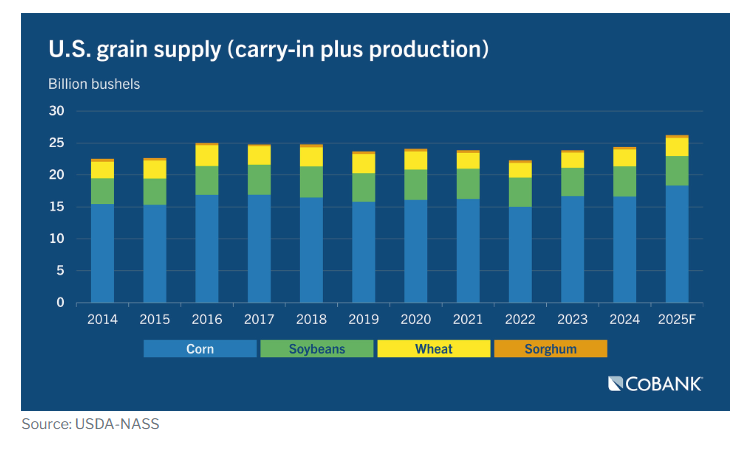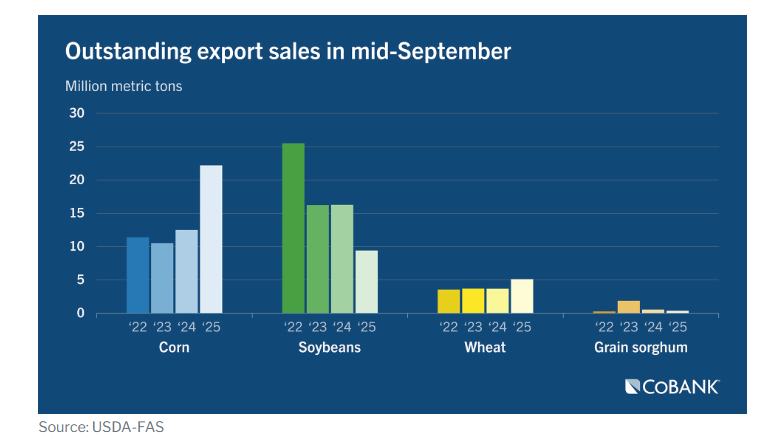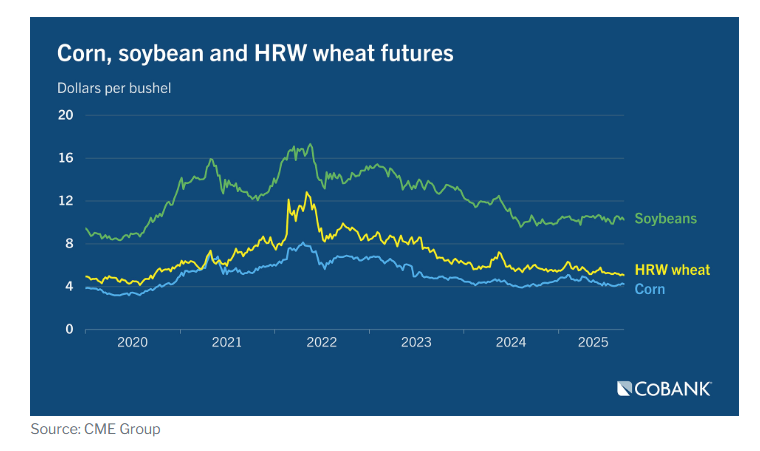
A bin-busting harvest is rolling across the plains, but for many producers, the record crop presents a complex logistical and marketing puzzle. According to Tanner Ehmke of CoBank, the combination of a massive supply, ongoing trade disputes, and shifting market dynamics is forcing farmers to rethink traditional strategies for selling and storing their grain.
Speaking with Farm Director KC Sheperd, Ehmke laid out a bifurcated landscape where different commodities face vastly different challenges.
“We’ve got a big crop coming, and it’s going to create some logistical issues,” Ehmke said. “It’s resulting in some new marketing opportunities or challenges, if you will, for a lot of farmers.”

The China Factor: Soybeans and Sorghum Face Headwinds
The primary challenge stems from trade uncertainty with China, a critical market for U.S. soybeans and grain sorghum. With a trade deal still in question and China having already sourced heavily from other nations, demand for U.S. supplies is sluggish.
“We can fully anticipate we’re going to have a slower shipping pace to China, because they’ve had record imports of Brazilian soybeans this year. They’re just not desperate for U.S. beans right now,” Ehmke explained. This forces farmers who typically sell these commodities directly off the combine to find storage, either on-farm or at elevators charging higher fees.
This has led to what Ehmke calls a “reversal of this dynamic,” where farmers who used to store corn are now having to store soybeans. “That creates a situation where farmers are going to have to learn some different marketing skills, if you will,” he added, pointing to the need for proficiency in on-farm storage and using storage hedges to manage risk.

Corn and Wheat: A Different Story
Conversely, corn and wheat are experiencing a more favorable export environment. With less exposure to the Chinese trade war, these commodities are seeing strong demand from Mexico and other international buyers.
“You have Mexico and some other markets that have been aggressive buyers of U.S. corn and wheat,” Ehmke noted. This demand is further supported by a weakening dollar and falling transportation rates, making U.S. grains more competitive globally.
While rail shipments to Mexico and the Pacific Northwest are robust, Ehmke pointed to low water levels on the Mississippi River as a potential bottleneck for barge traffic. However, the reduced soybean demand from China has freed up some barge capacity for corn and wheat, softening the impact.

Navigating a Complex Market
For producers, this environment demands a strategic and localized approach. While futures markets are showing “bigger carries”—offering opportunities for those who can execute a storage hedge—local basis levels are weak. Ehmke stressed the importance of relationships with local end-users like ethanol plants or feedlots.
“If you have local demand there, perhaps there might be an opportunity to participate in a stronger basis,” he said.
KC Sheperd raised the possibility of year-round E15 ethanol boosting corn demand. While Ehmke agreed it was a positive, he offered a crucial caveat.
“Basis on grain sorghum is extraordinarily cheap,” he said. “We’ve seen it… where ethanol plants are using more and more grain sorghum and replacing that… using grain sorghum to replace corn.”

“Hitting Singles”: Strategy in a Low-Margin Year
Ultimately, Ehmke advised that this is not a year for home runs, but for careful, incremental gains. He urged producers to work closely with their entire team of advisors.
“It’s one of those years where it’s winning by… hitting singles,” Ehmke analogized. “You’re not hitting home runs in these kind of market environments. You’ve got to be pinching pennies on your cost of production.”
A critical part of that strategy involves a frank conversation about finances. For some, the cost of holding grain may outweigh the benefits.
“Perhaps the best use of your money is to sell that grain across the scale and pay down your debt and pay down some of that interest expense,” he advised. “All of this needs to be done in conversations with your accountant and your marketing advisor.”
For those seeking more data to inform these decisions, Ehmke pointed to CoBank’s free public resources.
“Easiest place to go is cobank.com,” he concluded. “Just navigate to the Knowledge Exchange tab and you can find our outlooks for the industry.”



















